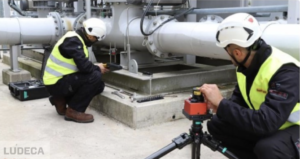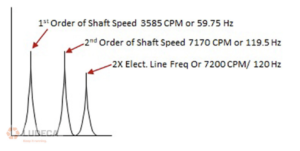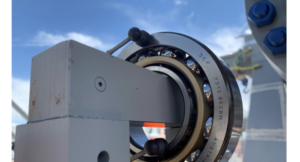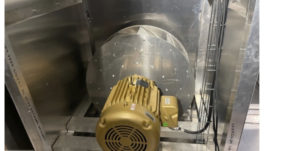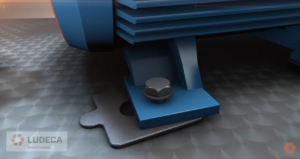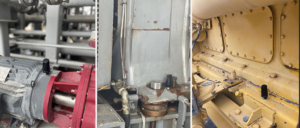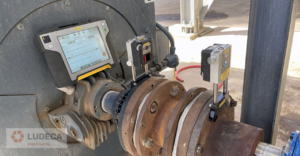Because of my many years of experience in the field of installation and maintenance of rotating equipment, I can say that installation is a fundamental thing. But why is this phase so important? Well, because the installation has a direct impact on the machinery, and will determine operating conditions, performance, and life cycle cost. Basically, the way you install your rotating equipment is the way it will perform. And personally, I always ask myself why companies buy million-dollar pieces of equipment and let inexperienced installers do the installation. Then, they spend another million dollars on condition monitoring watching them fail. Don’t get me wrong; condition monitoring is extremely important to understand what is happening to the machines and detect an early failure. But the fact is that most of the…
Frequency can be defined as how often an event occurs per unit of time. A vibration spectrum is displayed as a horizontal and vertical plot (X and Y). The horizontal (X) axis is the frequency axis and shows a representation of how often an event occurs. Typically, the vibration analyst may use multiple units of reference for the frequency axis when doing vibration analysis. The most common units used for the spectrum (FFT) are cycles per minute (CPM) and Hertz. The least known unit for the spectrum frequency axis is “Orders” or multiples of shaft turning speed. It is critical to understand the differences in the frequency units (Hz, CPM, and Orders). It can be advantageous to view data in different units depending upon the machine and the problem being…
Traditional induction heaters only offer one temperature probe, to monitor the temperature of the inner diameter (ID) of the bearing being heated, assuming that both the inner diameter (ID) and outer diameter (OD) will heat evenly. However, the ID heats faster than the OD, potentially causing stresses between the ID, OD, and the rolling elements. This stress can lead to cracks, fractures, pitting, and deformation of the rolling elements, which can reduce the lifespan of the item being heated. These issues can go undetected, especially in high-precision bearings, where tolerances between the rolling elements and the ID/OD are tight. Even with sprockets and gears, the stress between the ID and OD can produce cracks and fractures in the membrane between them. Figure 1 – illustrates how the ID heats faster…
All rotating equipment shall be designed and constructed so that its first critical speed is at least 125 percent of the maximum design speed for the equipment (i.e. rotating equipment shall operate at speeds less than 80 percent of their true critical speed). Unless otherwise required, equipment shall be balanced according to the recommendations given in this section.Equipment components such as motors, pump rotors, fan wheels, etc. shall be factory balanced both statically and dynamically, to meet the field balance requirements described below.All balance reports shall be referenced in inches per second (ips or in/sec), zero to peak. A balance report shall be provided for each piece of equipment tested.Balance of Critical Equipment:All equipment located in areas that may be sensitive to process vibration shall be classified as “critical” equipment…
Functional failures in plant equipment are unavoidable. However, the way a company handles its asset failures can have an impact on the bottom line of the annual maintenance budget. For instance, this can mean that the maintenance department reacts to fix an issue after it occurs, or has Proactive Maintenance technology and processes (PMs) in place to reduce the number of surprise failures. There are higher costs associated with both, but the difference lies in how long we hold these higher costs. Let’s take a look. REACTIVE CULTURE Reactive maintenance, as the name suggests, means fixing something when it breaks. When a company remains in a reactive maintenance state, they can quickly get into a downward spiral of bad situations. Maintenance costs can pile up on top of one another.…
MYTH: “You should always do your shimming first and then make your horizontal moves.” TRUTH: This is generally true for the final alignment after soft foot has been corrected, but is not universally true for all alignments. In fact, for the initial rough alignment, you should correct the plane with the largest misalignment first, even if this means making a horizontal move first. Reason: If you have gross misalignment, you could be binding the coupling, deflecting the shafts, and imposing undue load on the bearings. By relieving strain from excess misalignment, a truer picture of the alignment condition emerges, and you eliminate an important outside force that creates machine frame distortion (soft foot). Therefore, the correct sequence of events in any alignment job is: Safety: Lockout & tag out plus clean upRough…
Wireless vibration sensors have their place in a good reliability program and can benefit the maintenance team’s ability to monitor machine health reliably. When choosing a wireless vibration sensor, the battery life is a key parameter in its selection. Designers and manufacturers should perform battery capacity models to be confident in the performance and battery life alongside actual current consumption measurements. When creating a battery capacity model to determine battery life within a wireless sensor, there are several main considerations: Battery chemistry: The type of battery chemistry used in the device can greatly impact the battery life. For example, lithium-ion batteries have a higher energy density than nickel-cadmium batteries and therefore can last longer. However, Lithium Thionyl Chloride (LTC) has a stable voltage over time and high current pulse capability for…
There has been a lot of improvement because of the laser shaft alignment and laser geometric alignment systems. They help you to identify the failures in your machinery and eliminate them easily. That’s why it is always critical to make necessary alignment activities to keep your equipment working stably and consistently with accuracy, less effort, and less training. We can also use straight edge method for rough coupling and alignment or otherwise reverse indicator method which is sometimes affected by obstacles like vibration effects which can be used when the technician is experienced enough to know exactly what he is doing for accurate results. However, these methods are not as efficient and accurate as the use of the laser is. The major types of misalignment are the offset and angular misalignment. The laser alignment is definitely faster…
Q1. WHY IS IT NECESSARY TO LOOK AT ALIGNMENT CONDITION RESULTS AT THE COUPLING? WHY CAN’T I JUST GET MY FEET TO WITHIN 2 THOUSANDTHS TO FINISH THE ALIGNMENT? Because the numbers at the feet are only a rough guide to the actual alignment condition. Large corrections at the machine feet don’t automatically point to a misaligned coupling, in which case you are spending more time than necessary on an alignment. The opposite can also be true. Small corrections at the feet don’t automatically mean your alignment at the coupling is good either, in which case you are bolting down a misaligned machine. The coupling is where we want to establish the true alignment condition. Not only is this the point of power transmission but it is also the point…
Damage inside of a rolling element bearing begins with sub-surface fatigue and results in a detectable sound signal that occurs in the ultrasonic frequency range. Ultrasound can be used to detect these Stage 1 bearing defects which would not be visible looking at typical vibration spectrum. If you listen to the sound that is being produced from a bearing with a Stage 1 defect, it would sound relatively smooth and sound similar to a bearing that was in need of lubrication. The difference between the two is that after adding lubricant to the bearing with the Stage 1 defect, the amplitude of the sound would not decrease, whereas with a bearing requiring lubrication the sound level should reduce and return to baseline. As the wear progresses and the sub-surface cracks become…
Blog archive
- March 2024 (2)
- November 2023 (2)
- September 2023 (2)
- August 2023 (1)
- July 2023 (2)
- June 2023 (5)
- May 2023 (3)
- April 2023 (1)
- March 2023 (1)
- February 2023 (1)
Ludeca Blog
- The Battle Versus Single Axis or Triaxial Sensors!
- Case Study: Bore Alignment with Easy-Laser E950 on a Split-Casing Pump
- Why Lubricate?
- Shaft Alignment: What are the Setup Basics?
- Do you know what “Grease Worms” are?
- Three Myths About Greasing Bearings
- What Impact Does Precision Maintenance Have On Your Equipment?
